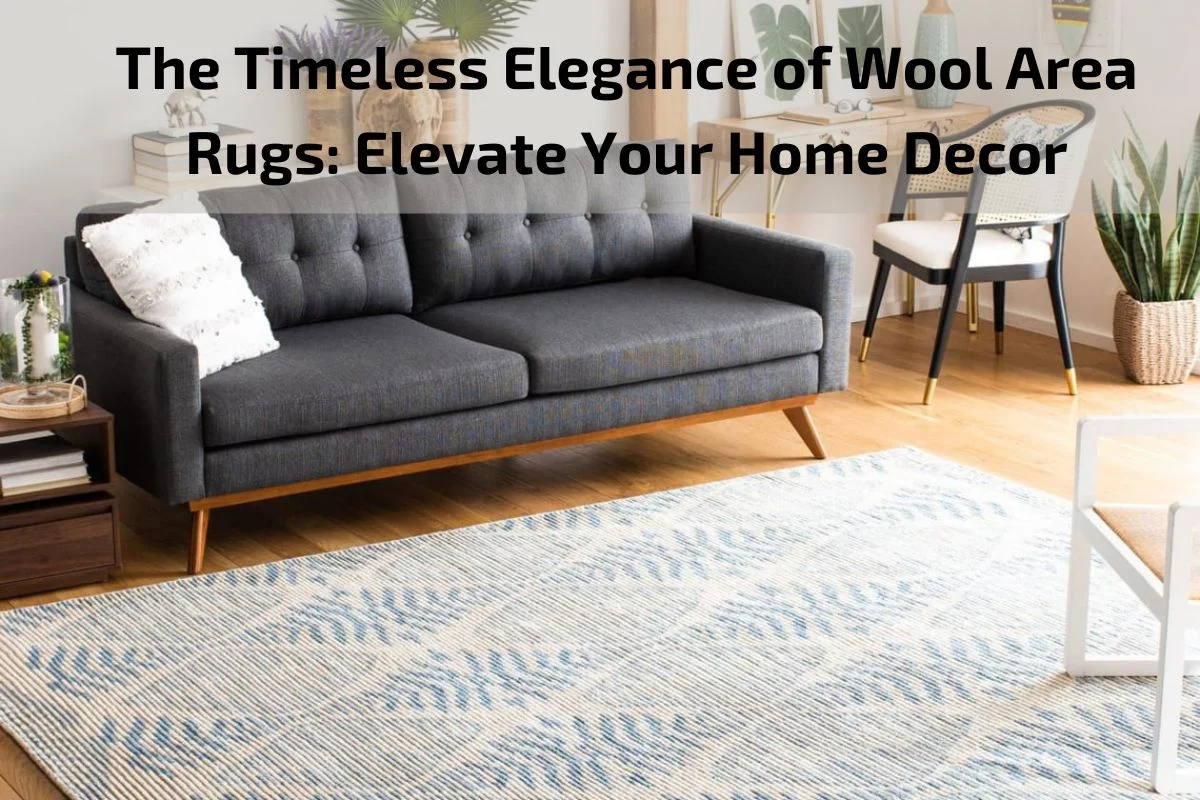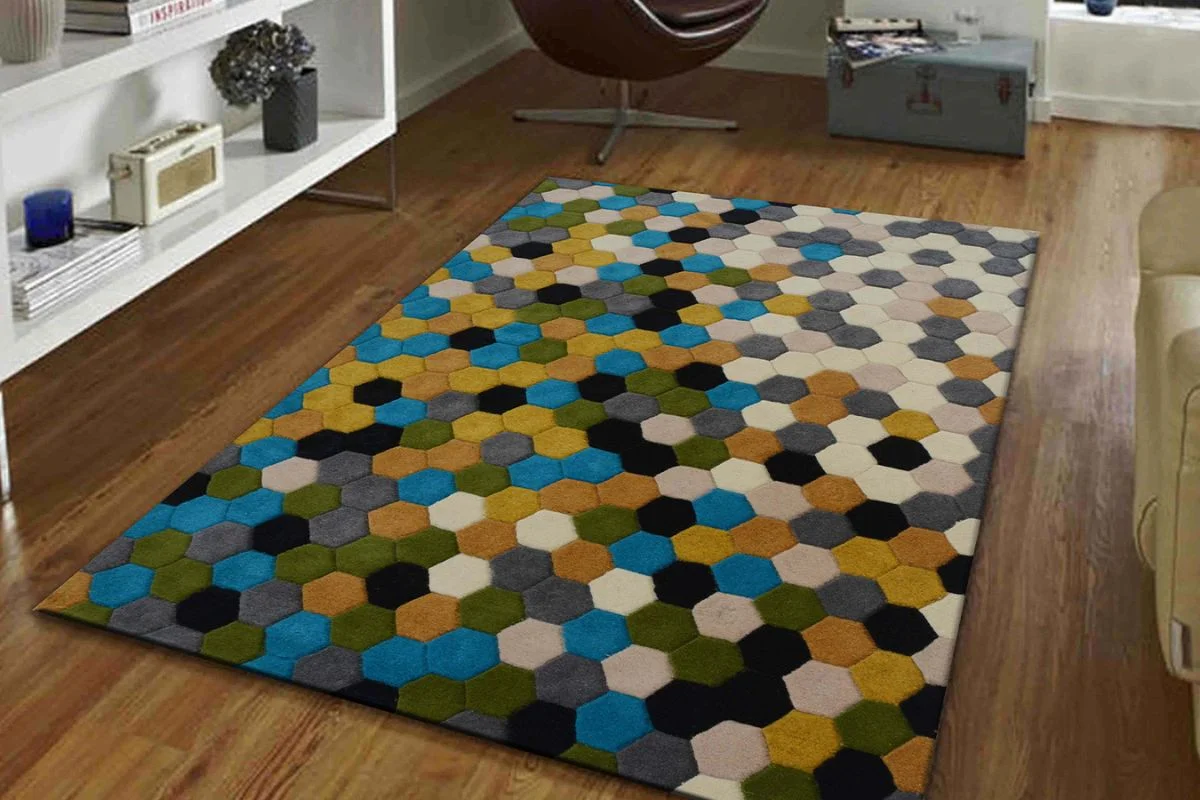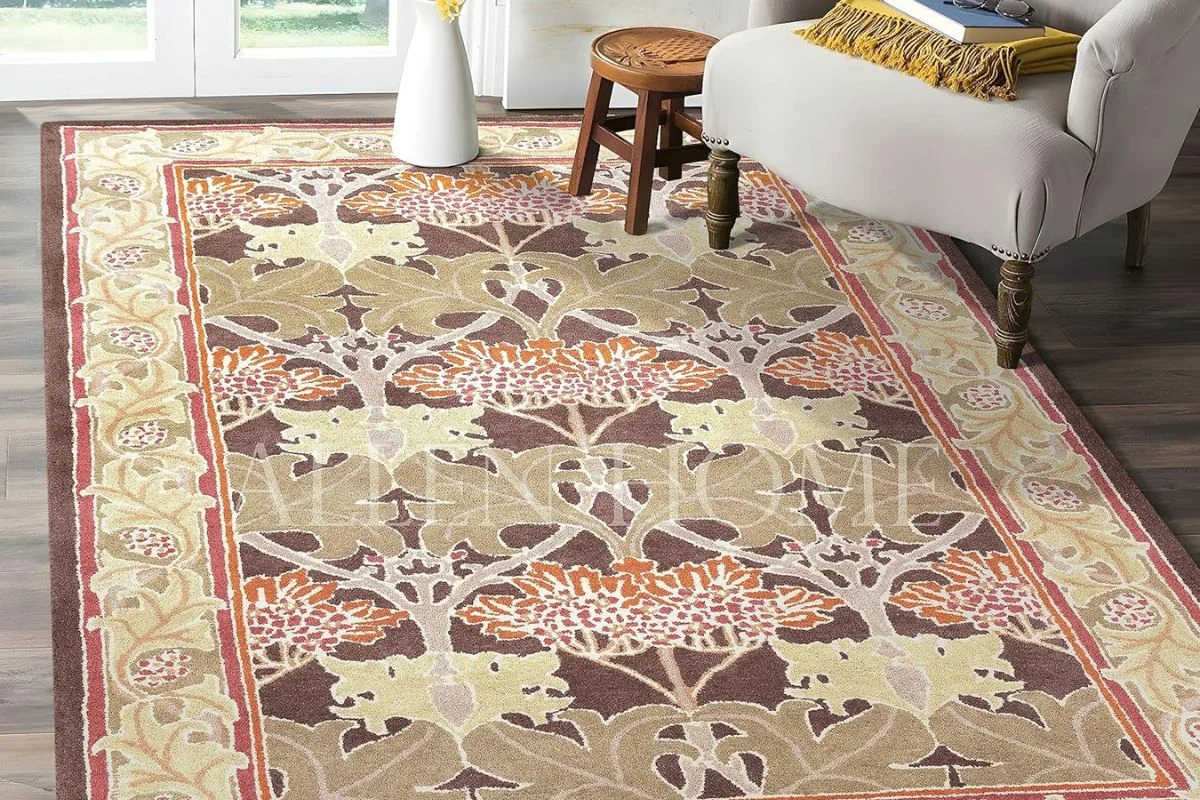“The Timeless Elegance of Wool Area Rugs: Elevate Your Home Decor
In the realm of home decor, certain elements possess an enduring allure that transcends fleeting trends and passing fads. Among these, wool area rugs stand as timeless symbols of elegance, sophistication, and comfort. With their rich history and unparalleled beauty, wool area rugs have long been revered for their ability to elevate and transform living spaces into havens of warmth and style.
From the sumptuous textures to the intricate patterns, wool area rugs exude a sense of luxury that captivates the senses and captivates the soul. They serve as focal points, anchoring rooms with their presence while infusing them with a sense of refinement and character. Whether adorning hardwood floors in grand parlors or adding warmth to cozy living rooms, wool area rugs have a remarkable ability to enhance the ambiance of any space they inhabit.
Brief overview of wool area rugs
A. Wool area rugs are versatile and timeless additions to any home decor. Made from natural wool fibers, these rugs offer warmth, comfort, and durability. Their natural properties make them resistant to stains, odors, and allergens, making them an ideal choice for households with pets and allergy sufferers. Wool rugs come in a variety of styles, patterns, and colors, making it easy to find the perfect rug to complement any interior design theme. Whether hand-knotted by skilled artisans or machine-made with modern technology, wool area rugs add texture, warmth, and elegance to living spaces, making them a popular choice for homeowners and designers alike.
Importance of wool rugs in interior design
B. Wool rugs play a crucial role in interior design, serving as both functional and decorative elements within a space. Here’s why wool rugs are significant in interior design:
- Texture and Warmth: Wool rugs add texture and warmth to any room, creating a cozy and inviting atmosphere. The softness of wool fibers makes them perfect for areas where comfort is essential, such as living rooms, bedrooms, and nurseries.
- Visual Interest: Wool rugs come in a variety of textures, patterns, and colors, allowing them to become focal points or tie together different elements of a room. Whether it’s a traditional Persian rug or a modern geometric design, wool rugs contribute to the visual appeal of a space.
- Versatility: Wool rugs are incredibly versatile and can complement a wide range of interior styles, from classic to contemporary. They can be used to add warmth and character to minimalist spaces or to anchor eclectic rooms with vibrant patterns and colors.
- Acoustic Properties: Wool rugs absorb sound, helping to reduce noise levels in rooms with hard surfaces like hardwood floors or tile. This makes them particularly valuable in open-concept living areas or homes with high ceilings, where sound can easily reverberate.
- Durability and Longevity: Wool is a durable and resilient material that can withstand heavy foot traffic and everyday wear and tear. High-quality wool rugs can last for decades with proper care, making them a wise investment for homeowners looking for long-term solutions.
- Sustainability: As a natural and renewable resource, wool is an eco-friendly choice for environmentally conscious consumers. Wool rugs are biodegradable and require less energy to produce compared to synthetic alternatives, making them a sustainable option for sustainable design practices.
The Benefits of Wool Area Rugs
Durability:
- Wool area rugs are known for their exceptional durability, making them suitable for high-traffic areas in homes and commercial spaces.
- The natural resilience of wool fibers enables them to withstand constant use and retain their shape and beauty over time.
- Unlike synthetic materials, wool is less prone to crushing and matting, ensuring that wool rugs maintain their appearance even in busy households.
Comfort and Insulation:
- Wool rugs provide unmatched comfort underfoot, offering a soft and plush surface for walking, sitting, or lounging.
- The insulating properties of wool help regulate room temperature by trapping heat during colder months and keeping spaces cool in warmer weather.
- This natural insulation can contribute to energy efficiency by reducing the need for heating and cooling, making wool rugs both comfortable and cost-effective.
Sustainability and Eco-Friendliness:
- Wool is a renewable and biodegradable resource, making wool rugs an environmentally friendly choice for conscious consumers.
- Sheep, the source of wool fibers, can be sustainably raised and shorn without causing harm to the environment.
- Additionally, wool rugs have a longer lifespan than synthetic alternatives, reducing the need for frequent replacements and minimizing waste.
Hypoallergenic and Air-Purifying:
- Wool fibers possess natural properties that make them resistant to dust mites, mold, and mildew, making wool rugs ideal for allergy sufferers.
- The structure of wool fibers allows them to absorb and neutralize indoor air pollutants, improving indoor air quality and promoting a healthier living environment.
- By choosing wool area rugs, homeowners can create a cleaner and safer space for themselves and their families while reducing the risk of allergic reactions and respiratory issues.
Style and Versatility:
- Wool rugs come in a wide range of styles, patterns, and colors, allowing homeowners to find the perfect rug to complement their interior decor.
- Whether seeking a traditional Oriental rug, a contemporary geometric design, or a neutral textured rug, there is a wool rug to suit every taste and aesthetic preference.
- The versatility of wool rugs makes them suitable for various rooms and settings, from formal living areas and dining rooms to casual family spaces and bedrooms.
Types of Wool Area Rugs
Traditional Hand-Knotted Rugs:
- Crafted by skilled artisans using traditional weaving techniques passed down through generations.
- Known for their intricate designs, rich colors, and superior craftsmanship.
- Each rug is a unique work of art, reflecting the cultural heritage and craftsmanship of its origin.
- Traditional hand-knotted wool rugs are highly durable and can last for generations with proper care.
Contemporary Machine-Made Rugs:
- Produced using modern manufacturing processes and technology, such as power looms.
- Offer a wide range of designs, patterns, and colors to suit modern interior aesthetics.
- Machine-made wool rugs are more affordable than their hand-knotted counterparts and are readily available in various sizes and styles.
- While they may lack the intricate detail of hand-knotted rugs, machine-made wool rugs are still durable and stylish options for contemporary homes.
Natural Dye vs. Synthetic Dye Rugs:
- Natural dye rugs are colored using plant-based or insect-derived dyes, resulting in soft, muted tones that age beautifully over time.
- Synthetic dye rugs are dyed using chemical-based pigments, offering a wider range of vibrant colors and patterns.
- Natural dye rugs are prized for their eco-friendliness and sustainability, as they are made from renewable resources and produce minimal environmental impact.
- Synthetic dye rugs provide greater color consistency and may be more affordable than natural dye options, but they may not be as environmentally friendly.
Flatweave Rugs:
- Flatweave rugs are woven on a loom without a pile, resulting in a thin and lightweight rug that is easy to clean and maintain.
- Common types of flatweave wool rugs include kilims, dhurries, and soumaks, each with its own unique weaving technique and cultural significance.
- Flatweave rugs are versatile and can be used in high-traffic areas, such as entryways, kitchens, and hallways.
- They are often reversible, allowing for extended use and even wear over time.
Tufted Rugs:
- Tufted rugs are created by punching strands of wool yarn through a backing material, creating a looped or cut pile surface.
- They come in various pile heights and densities, offering plushness and comfort underfoot.
- Tufted wool rugs are available in a wide range of styles, from traditional to contemporary, and can be customized to suit individual preferences.
- While tufted rugs may not have the same level of durability as hand-knotted or flatweave rugs, they are more affordable and can still add warmth and style to any room
Maintaining Wool Area Rugs
Regular Vacuuming:
- Vacuum your wool area rug regularly to remove dust, dirt, and debris that can accumulate on the surface.
- Use a vacuum cleaner with a beater bar or brush attachment, but avoid using the vacuum’s rotating brush on delicate or high-pile rugs to prevent damage to the fibers.
- Vacuum in the direction of the rug’s nap to lift dirt and maintain the rug’s appearance.
Spot Cleaning and Stain Removal:
- Attend to spills and stains promptly to prevent them from setting into the fibers of the wool rug.
- Blot spills with a clean, white cloth or paper towel to absorb as much liquid as possible without rubbing or scrubbing.
- Use a mixture of mild detergent and water to gently clean stains, testing it on a small, inconspicuous area of the rug first to ensure colorfastness.
- Avoid using harsh chemicals or bleach-based cleaners, as they can damage the wool fibers and cause discoloration.
Professional Cleaning:
- Schedule professional cleaning for your wool area rug at least once a year to remove deep-seated dirt, stains, and odors.
- Choose a reputable rug cleaning service that specializes in wool rugs and uses gentle, eco-friendly cleaning methods.
- Professional cleaners may offer additional treatments such as mothproofing or stain protection to prolong the life of your wool rug and keep it looking its best.
- Ensure proper drying of the rug after professional cleaning to prevent mold and mildew growth.
Rotating and Flipping:
- Rotate your wool area rug periodically to ensure even wear and fading, especially in high-traffic areas.
- Flipping the rug occasionally can also help distribute wear and maintain its appearance over time.
- Consider using rug pads underneath your wool rug to provide cushioning, prevent slipping, and protect both the rug and the underlying flooring.
Sunlight Protection:
- Limit exposure of your wool rug to direct sunlight, as prolonged UV exposure can cause fading and discoloration.
- Use window treatments such as curtains or blinds to block out harsh sunlight and protect your rug from damage.
- Rotate the rug periodically to ensure that any fading or color changes occur evenly across the entire surface.
Conclusion
In conclusion, wool area rugs offer a multitude of benefits that make them a popular choice for enhancing the comfort, style, and functionality of interior spaces. From their durability and comfort to their sustainability and versatility, wool rugs are not only practical but also add warmth and character to any room.





0 comments